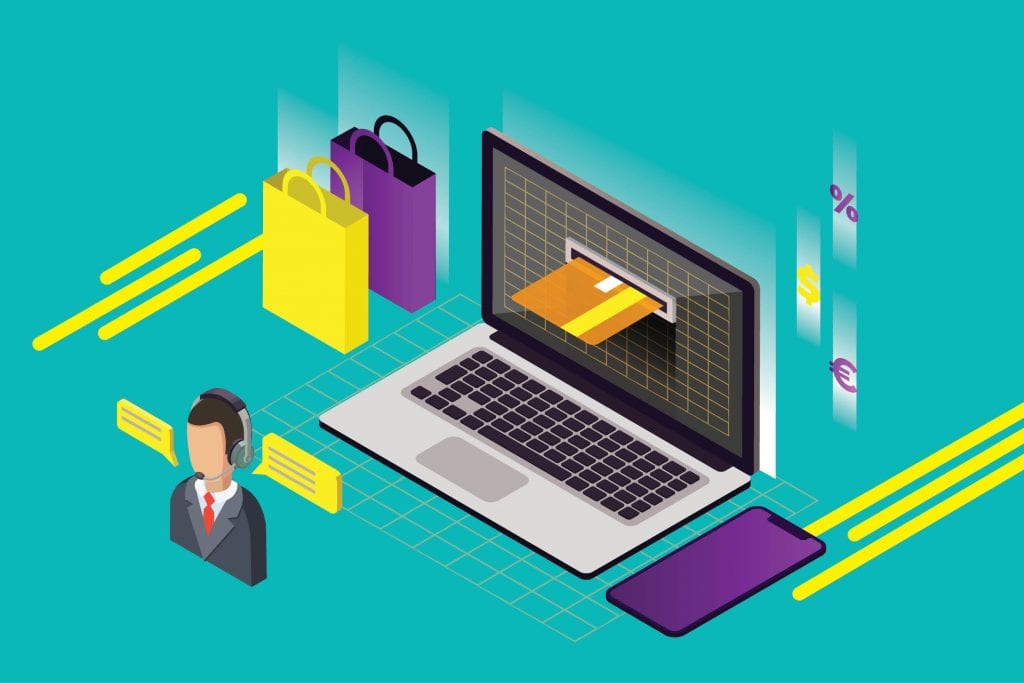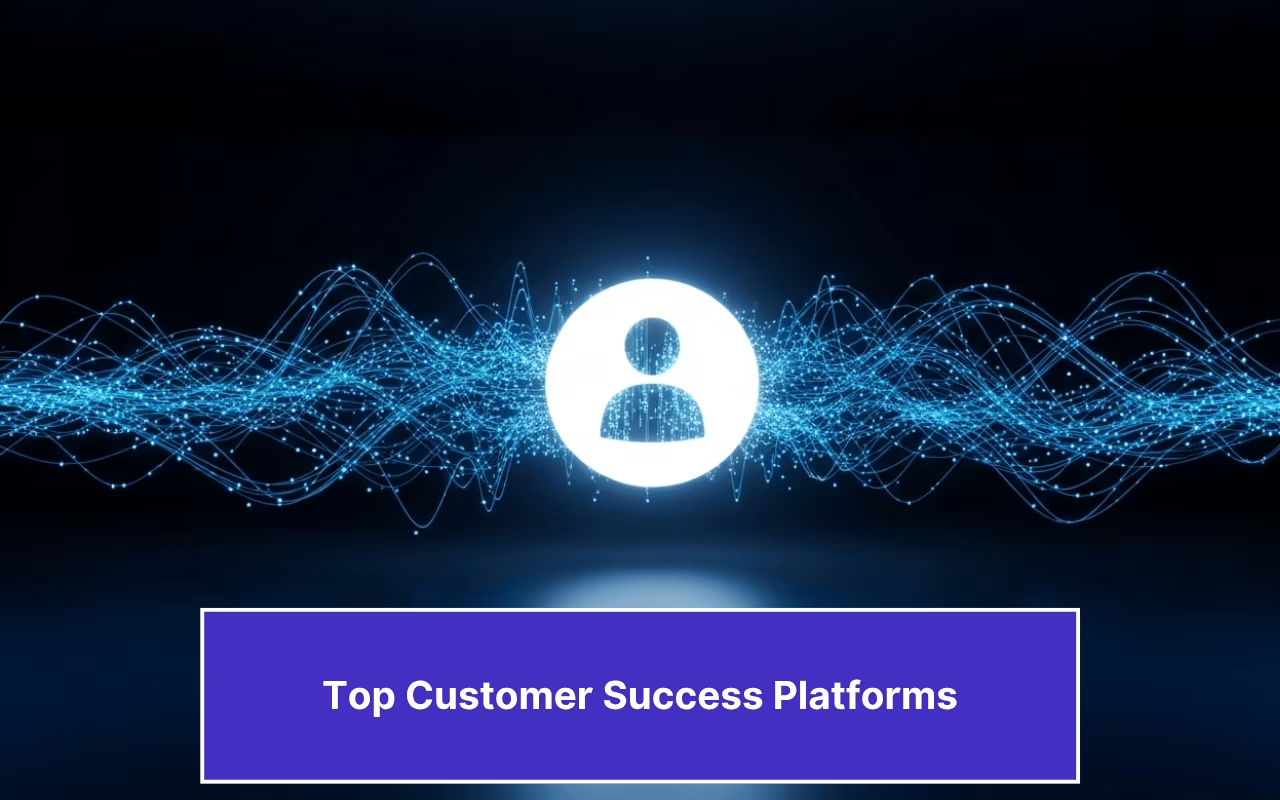Updated on May 9, 2025

Today’s E-commerce customer has no shortage of choices when it comes to online shopping, with brands catering to every market niche without any global monopoly. With decreasing attention spans among online shoppers and immense competition, online retailers need to step up their E-commerce customer experience game if they are looking for lasting success.
Here we go through 4 ways to change how the customer experiences E-commerce through various touch points, from browsing and purchase to post-sales service:
1.Focus on the Employee Experience to Enhance the E-commerce Customer Experience
What do HubSpot, Workday, and Cisco have in common? They are consistently ranked as the best places to work according to Forbes in 2021 due to their excellent work culture and how well they treat their employees.
HubSpot provides its employees with programs for personal and professional development, and employees are also encouraged to build lasting relationships with its customers. The result is a happier workforce and a customer experience that is hard to beat.
Workday and Cisco have promoted innovation among employees by encouraging teamwork and providing them with adequate training and resources to address customer needs effectively.
The takeaway is that the customer experience largely depends on the employee experience. You can implement process improvements more effectively by incorporating employee insights and feedback and achieve customer satisfaction and delight. By trying out new incentive programs and utilizing shift rotations for the customer support and success teams that require 24/7 staffing, you can bring about a more outstanding work-life balance for employees. Such employee engagement translates directly to a superior E-commerce experience.
2. Personalize the E-commerce Customer Experience
While personalization and customization deal with tailored experiences, personalization involves the online brand using customer data to provide a relevant E-commerce customer experience. With customization options, including print on demand products, customers can directly influence their online product experience.
Personalization ensures the array of products and services offered to customers online is highly relevant to their needs and preferences. A survey by the advertising and marketing company Epsilon and analytics consultancy GBH insights has shown that 80% of customers expect personalization from retailers and will seek competitors if their personalization needs aren’t met.
Let’s see how you can implement online personalization as an E-commerce enterprise:
Localization
Localization refers to modifying a product or service to suit a demographic’s specific language and cultural needs. This can be achieved through methods such as displaying product descriptions in the language of one’s choice, tailored banner content online, and even blog posts. Tools like Translation Management Systems (TMS) can assist in managing these localization tasks efficiently, ensuring consistent results.
Relevant Product Recommendations
When a customer buys a particular product online, the related products or accessories can be displayed as product recommendations. For instance: a 3D printing enthusiast who purchased a printer online will need filament for printing and other consumables such as sandpaper and LED lights. Likewise, someone ordering blank t-shirts might be shown suggestions for dtg or screen printing services.
Appropriate User-Generated Content
People choose other people over brands regarding opinions about products and services online or offline. By harnessing the power of user-generated content such as images, videos, and blog posts, brands can increase their customers’ trust in their products and increase word of mouth. Such content can also serve as social proof, which is usually a ringing endorsement for online companies regardless of size.
Targeted Discounts
By leveraging customer data related to purchasing patterns, E-commerce stores can anticipate customer needs and offer appropriate discounts to the right customers. Such scalable automation requires little effort but pays large ROI dividends. When customers buy 3D printing filament, they are bound to need more periodically if they own a 3D printer. Offering discounts on 3D filaments would help the customer choose your E-commerce store over others.
Once implemented effectively, such personalization is bound to yield some or all of these benefits:
Superior E-commerce Customer Experience
Everything flows from the customer experience at your online store. Once your customers get used to an E-commerce experience that is better than your competitors, they will spend more time on your E-commerce website or online store. They might even recommend your store to anyone in need of similar products.
Higher Conversion Rates
By reducing the time taken for prospective customers to search for a product they want, you are sure to boost the probability of them buying from your store. Product recommendations, customer-specific cart reminder emails, and peer-reviews of top-selling products will help customers choose your products over others in the online marketplace.
Increased Brand Engagement and Loyalty
Brand engagement can include anything from a tweet about how great your product is to a full-blown review of your product or service on various social media platforms. This snowball effect leads to brand loyalty as long as your store maintains a consistently good E-commerce customer experience.
3. Implement an Omnichannel E-commerce Customer Experience
These days, the sale of a product online can start with the customer viewing an ad on a desktop computer, using a smartphone to purchase the product, and a tablet to track the product delivery. While E-commerce stores can have a presence on these device platforms, the customer might undergo a fragmented E-commerce customer experience.
In such a multi-device and platform environment, omnichannel E-commerce comes into play, where regardless of the device or platform that the customer uses, the customer experience itself will be seamless. You can implement omnichannel strategies for E-commerce by:
Sourcing Accurate Customer Data
The success of omnichannel strategies depends on how well you analyze customer behavior on a particular platform and what triggers the switch from one device or platform to another. Evaluating purchasing patterns will help bridge the experience gap between various platforms for brands while making the switch seamless for the customer.
Implementing High-Touch Commerce
An approach that is making its way swiftly in the E-commerce marketplace is the practice of using human interaction to address customer needs at a physical location. Such interaction can be as simple as a sales associate at a brick-and-mortar outlet of an E-commerce store assisting the buyer and converting the sale into digital data using his device. This brings in the human touch and also gathers much-needed data for online stores at physical locations.
Using Machine Learning to Power Personalization
You can achieve personalization at scale for E-commerce enterprises only through the effective use of machine learning to aid team efforts in customer data collection and analysis. Unlike manual data processing, machine learning gets more precise with increases in customer data volume.
Implementing post-sales support that aligns with the brand
It is well known that customer retention costs less than acquisition. Post sales support ensures that customers you have acquired have their product-related issues resolved quickly. Such support can range from installation to refunds and returns. The name of the game here is response time – you must answer the customer’s queries through email, live chat with an agent, or even an FAQ page. As an E-commerce enterprise, you can shave precious minutes off customer wait time by installing and implementing chatbots that handle simple queries at scale using an eCommerce chatbot guide. You could always route complex queries to an agent who has relevant expertise.
4.Make Your Checkout Process Frictionless
Even if you have implemented all the factors mentioned above, if you fail to remove any obstacles to a smooth checkout process, the customer will quit the site and abandon the online order. Online retailers have stated that cart abandonment is a major issue, and significant planning should go into resolving it.
You can use these features to help your customers breeze through the checkout page:
Guest User Log-in
The second customers see a mandatory account sign-up for a purchase, they face a barrier to purchasing their desired product. Instead, enable guest checkout and offer a speedier checkout with account creation. Enabling guest accounts will significantly increase conversion rates at the checkout stage.
One-Page Checkout
Nothing will sap the spirit of a customer faster than multiple checkout pages. Ensure you, as a seller, can fit in all required checkout details from shipping to payment on one single page to avoid fatiguing the customer. You can also use self-validating form fields to prevent the re-entry of data by the customer.
Multiple Payment Methods
Offering your customers various payment options ranging from credit and debit cards to global payment gateways such as PayPal and cash on delivery is essential to higher conversion rates. Currency converters and Purchasing Power Parity applications are other good ideas for your international customers.
In a Nutshell
E-commerce has come a long way since its inception, with customers deciding which enterprises succeed in the marketplace and those that don’t.
Online retailers must go beyond product offerings and provide an exceptional E-commerce customer experience through a seamless omnichannel presence to ensure customer satisfaction and loyalty.
While no cookie-cutter model suits every online enterprise, custom implementations of the aspects mentioned in this article are bound to drive conversions and boost brand loyalty.
Subscribe here to get the good stuff. We solemnly swear to deliver top of the line and super beneficial content to you once a week.
At Kommunicate, we are envisioning a world-beating customer support solution to empower the new era of customer support. We would love to have you on board to have a first-hand experience of Kommunicate. You can signup here and start delighting your customers right away.

CEO & Co-Founder of Kommunicate, with 15+ years of experience in building exceptional AI and chat-based products. Believes the future is human + bot working together and complementing each other.





